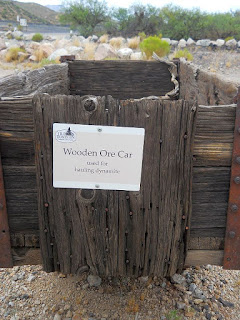If you're wondering where to go in 2016, the
New York Times has some idea. It recently published a list of
places to visit in the coming year. The United States dominated the list, with more places than any other country in the world. Mexico City topped the list.
 |
| The American buffalo |
North Dakota's Theodore Roosevelt National Park ranked the highest of the 10 places in the United States that made the list. It came in at No.5 because the former president did more than anyone to preserve this area, starting with a cattle ranch he founded in 1974. It's a good place to see badlands and, buffalo grazing on prairies. Remote, but well worth the trouble to get there.
No. 12 on the list is Park City, Utah, which is home to the United States' largest ski\resort at 7,300 acres when Park City Mountain Resort merged with nearby Canyons ski resort. The mega resort is known as Park City; the two resorts are linked by an eight-passenger gondola.
It may surprise some that Grand Rapids, Michigan, is on the list. It is, after all, famous for making furniture and Gerald Ford. But the Times chose it because of its dramatic transformation via urban renewal and its burgeoning art scene. Cornerstone of the revival is the Grand Rapids Downtown Market, 138,000 square feet devoted to food; the building itself was made of materials from the rundown buildings it replaced. The city also is famous for ArtPrize, an annual competition of contemporary art that awards a half-million dollars in prizes. Not to be missed is the Frederik Meijer Garden & Sculpture part, which features work by famous artists, such as Rodin. Grand Rapids ranked 20th on the list.
No. 26 Washington, D.C., is already filled with historic monuments and museums. with the
Times picking it this year before of a new museum opening in the fall. The Smithsonian, already famous for its outstanding collection of museums, is adding the National Museum of African American Museum this fall.
The
Times calls Providence, Rhode Island, the East Coast's answer to Portland, Oregon. It's got famous new restaurants and the Creative Mile that is lined with sculptures that end in a new development that includes a riverfront park. It ranked No. 33 on the list.
East Bay, California, ranked No. 39 on the list because of its fast-growing population as well as its fast-growing arts and food scene. In Oakland, one of the East Bay communities, more than 300 restaurants and a dozen wineries have opened in recent years. Be sure to check out Spirits Alley where old Navy air hangers have been turned into breweries and wineries.
Most people have probably never heard of Rosine, Kentucky, No. 42; after all, it's only got 113 residents. It is, however, famous as the birthplace of bluegrass music. Jam sessions are held every Friday from March to December in an old barn that is a national landmark because it's said to be the place where bluegrass was invented by Bill Monroe. The small community hosts an annual bluegrass festival.
No. 46, St. Louis, Missouri, will open the National Blues Museum later this spring, the
times noted, focusing on this music as the foundation for other music genres in this country. The city also is focusing on making its famous arch more accessible to the public in a major project that refreshes parks and promenades in the area.
Like the rest of Texas, Marfa, No. 48, does things in a big way. Take for instance, the Chinati Foundation, which showcases gigantic works of art by contemporary artists. To be unveiled this year is a 10,000-square piece by Robert Irwin. Other cultural events include music and film festivals.
Last on the list is scenic Beaufort, South Carolina, made the list because of its many amenities that range from restaurants and galleries to bike trials and benches overlooking the water. It also is noted for the reopening of a 250-year-0ld house, the Anchorage 1770, that in the 19th century was home to a literary club that focused on drinking, dancing and gambling.






























